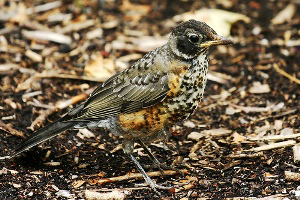During the breeding season, the American robin is one of the first birds to sing in the morning and one of the last to stop singing in the evening.
Photo Credit: Melvin Yap
Turdus migratorius
Common Name: American robin
Animal Guild: Bird
Class > Order > Family: Aves > Passeriformes > Turdidae
